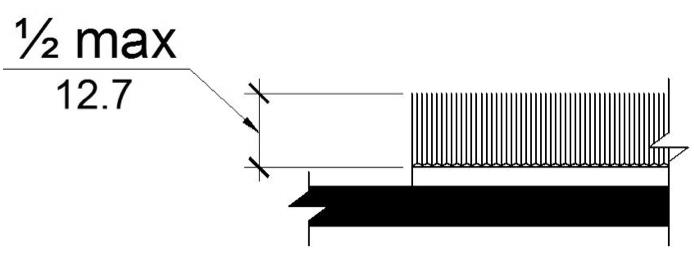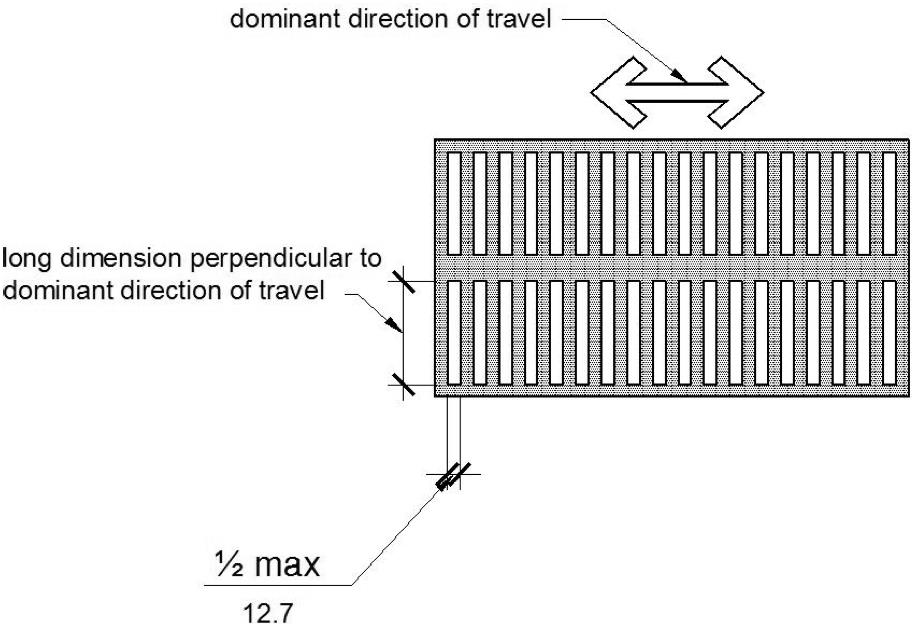2013 California Standards for Accessible Design Pocket Guide
11B-302 FLOOR OR GROUND SURFACES
11B-302.1 General.
Floor and ground surfaces shall be stable, firm, and slip resistant and shall comply with 11B-302.
Exceptions:
1. Within animal containment areas, floor and ground surfaces shall not be required to be stable, firm, and slip resistant.
2. Areas of sport activity shall not be required to comply with 11B-302.

Additional information regarding accessible exterior surfaces is available on the US Access Board website at http://www.access-board.gov/research/completed-research/accessible-exterior-surfaces. ◼
11B-302.2 Carpet.
Carpet or carpet tile shall be securely attached and shall have a firm cushion, pad, or backing or no cushion or pad. Carpet or carpet tile shall have a level loop, textured loop, level cut pile, or level cut/uncut pile texture. Pile height shall be ½ inch (12.7 mm) maximum. Exposed edges of carpet shall be fastened to floor surfaces and shall have trim on the entire length of the exposed edge. Carpet edge trim shall comply with Section 11B-303 _|Changes in Level|_.

However, in addition to circumstances in which the California Building Code applies to built-in floor mats, there may also be circumstances in which Americans with Disabilities Act (ADA) requirements apply to floor mats that are not built in. If movable floor mats impede access for people with disabilities, they may need to be moved or removed under Section 36.304 of the ADA Title III regulations. That section requires that a public accommodation remove barriers in existing facilities where removing them is "readily achievable," that is, easily accomplishable and able to be carried out without much difficulty or expense. Even though the requirements of this chapter would not apply to the mats themselves, the ADA regulations can provide helpful guidance in ensuring that mats do not constitute barriers.◼

CARPET PILE HEIGHT
11B-302.3 Openings.
Openings in floor or ground surfaces shall not allow passage of a sphere more than ½ inch (12.7 mm) diameter except as allowed in Sections 11B-407.4.3 _|Platform to Hoistway Clearance|_, 11B-409.4.3 _|Platform to Hoistway Clearance|_, 11B-410.4 _|Platform to Runway Clearance|_, 11B-810.5.3 _|Platform and Vehicle Floor Coordination|_ and 11B-810.10 _|Track Crossings|_. Elongated openings shall be placed so that the long dimension is perpendicular to the dominant direction of travel.

ELONGATED OPENINGS IN FLOOR OR GROUND SURFACES

User Comments/Questions
Add Comment/Question